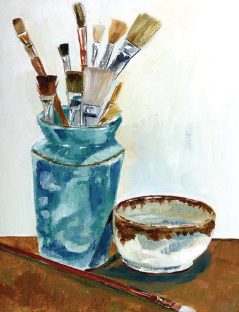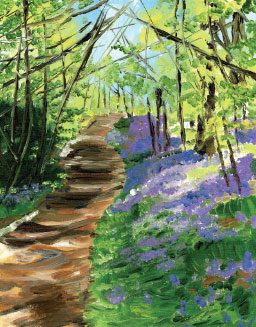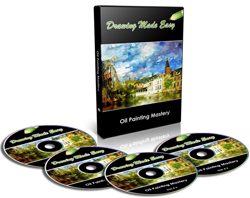For the beginning oil painter, perhaps the least intimidating way to familiarize oneself with the medium and tools used in oil painting is to concentrate on simple alla prima techniques.
Alla prima painting covers a wide range of styles, and is basically everything except glazing. It is painting quickly, loosely, and usually quite simply.
If you focus on a single, fairly simple subject matter, you can finish an alla prima oil sketch in only ten to twenty minutes.
An oil sketch is done quickly, with the goal of capturing the overall sense of the subject without too many details.
Limit yourself to no more than three colors and focus on speed and spontaneity. This is a great way to sharpen your artistic skills for other styles as well, because when you paint an oil sketch, you have to focus on seeing what is essential about your subject matter and putting it down with large, simple shapes that will strengthen your composition and increase realism.
After all, no matter what you draw or paint, those big shapes have to come first, and they must be accurate and interesting if the rest of the piece is to hold up.

You can also dive right in to oil painting by using the dabbing method. Dabbing and color block both focus on seeing those big shapes of color again, and putting them down as “blocks,” or shapes, without blending the outer lines smooth.
The result can be somewhat geometric, and since it’s not supposed to look especially polished or realistic, it’s an easy style to warm up with. When painting with blocks of color, you use a large bristle brush to block out the composition with simple, big flat strokes. This style, like the oil sketch, focuses on speed.
Get the “feel” of the composition down by establishing those large shapes first. Once the large shapes have been blocked in, you build up the paint and refine the shapes somewhat, but you never lose that “blocky” sense. In dabbing, you wrok the same
way as in blocking, but you use smaller strokes.
Dabbing is a bit like pointillism, but instead of making dots, you build up your shapes with little dabbing strokes of a small, flat bristle brush.

Because none of these three techniques are especially well-suited for smooth, highly realistic effects, you can work in any of these styles to make accomplished, beautiful paintings in oils without having to worry too much about a fussy underpainting or taking a long time to finish your piece.
You can get the entire thing done in one sitting, and in fact, to qualify as a pure “alla prima” technique, you should. There’s no time, then, for excessive fussiness. In these styles, the essential elements are key and there’s no room for sloppy composition.
Want To Learn More …

We have created Oil Painting Mastery so that with this simple step by step oil painting lessons you’ll be able to create masterpieces in record time – and this goes regardless of your previous experience.
With clear (and fun) instructions on how to draw … you’ll learn at your own pace in the comfort of your home.

